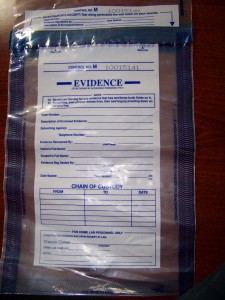In the world of criminal law truth is the gold standard. Who doesn’t want a truthful verdict? Admittedly, absolute truth is often illusive. But how can jurors and judges who were not at a scene, were not eyewitnesses themselves to the event and do not know the credibility or the accuracy of the witnesses called before them trust that they will make the right decisions on the liberty of another?
The answer is physical evidence.

For example, two people see a drive-by shooting. It is an unexpected event so neither person was particularly paying attention or anticipating it. These two people are going to have different recollections and perceptions as to the once in time event that was this drive-by shooting. Both folks can be totally honest in their belief as to what type of gun was used, the color of the gun or even who had it, yet be wrong in terms of the absolute truth. In short, memory is fungible. So in these instances, what can we do? We look at the physical evidence.
We can look for different calibers of shell casings left at the scene to see at least how many guns were involved provided we can link these casings to only this once in time event. We can attempt to do touch DNA on the spent cartridges.
In short, we can use physical evidence to narrow down the universe of possibilities independent of eyewitnesses. Then we can compare what the eyewitnesses say to see if the eyewitness accounts conflict with the known unquestionable physical reality as given to us by the physical evidence so that we may gauge the veracity and accuracy of the eyewitnesses’ perceptions of this singular event.
In criminal law, physical evidence is king. Physical evidence does not have bias. Physical evidence exists independent of the hopes and wishes of anyone. This is why it is so very important for physical evidence to be discovered, not contaminated and properly analyzed.


